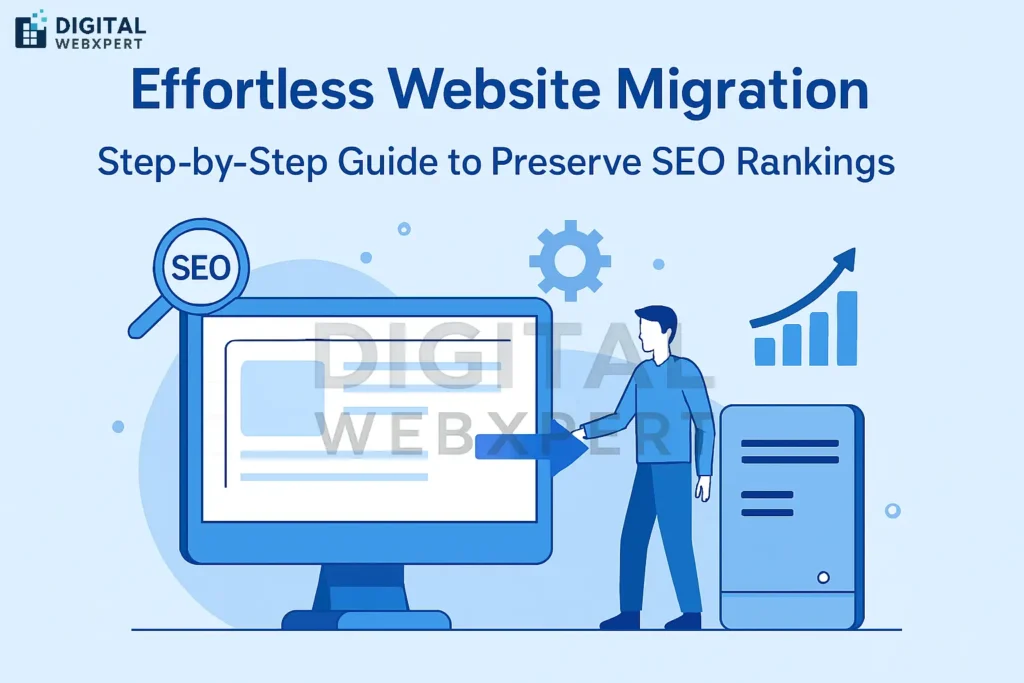Step‑by‑Step Guide: Effortless Website Migration Without Losing SEO Rankings
Migrating your website — whether to a new domain, CMS, or hosting provider — can feel like walking a tightrope. One wrong move, and your hard‑earned search rankings could plummet. But with the right strategy, you can migrate your website without losing SEO rankings and even improve them in the process.
In this guide, we’ll walk you through a proven, step‑by‑step SEO migration checklist designed for small business owners, startup founders, agencies, eCommerce sellers, nonprofits, and marketing teams who can’t afford to lose organic traffic.
1️⃣ Understand Why SEO Drops Happen During Migration
Before diving into the process, it’s important to know why migrations can hurt SEO:
- Broken URLs – Search engines can’t find your old pages.
- Lost backlinks – External links pointing to old URLs lose value.
- Poor redirect mapping – Incorrect or missing 301 redirects confuse crawlers.
- Content changes – Altering or removing high‑ranking content without strategy.
- Technical issues – Slow load times, missing metadata, or crawl errors.
Knowing these pitfalls helps you plan a migration that preserves your rankings.
2️⃣ Pre‑Migration SEO Audit
Before touching a single line of code, audit your current site:
- Crawl your site with tools like Screaming Frog or Sitebulb to capture all URLs.
- Export keyword rankings from Google Search Console and your SEO tool.
- Identify top‑performing pages by traffic, backlinks, and conversions.
- Document metadata (titles, descriptions, H1s) for each page.
- Check site speed and Core Web Vitals.
💡 Pro Tip: Treat this audit as your SEO insurance policy — it’s your baseline for post‑migration comparison.
3️⃣ Create a Content & URL Mapping Plan
Your URL structure is the backbone of your SEO. If you’re changing it:
- Map every old URL to a new one in a spreadsheet.
- Keep high‑value URLs identical where possible.
- For removed pages, redirect to the most relevant alternative.
- Maintain keyword‑rich slugs for SEO continuity.
4️⃣ Set Up 301 Redirects
301 redirects tell search engines that a page has permanently moved.
- Implement one‑to‑one redirects (old page → exact new page).
- Avoid redirect chains (old → temp → new).
- Test redirects before going live.
- Keep them active for at least 12 months.
5️⃣ Optimize the New Site Before Launch
Before flipping the switch:
- Migrate metadata exactly as in your audit.
- Ensure mobile‑friendly, responsive design.
- Optimize page speed (compress images, minify code).
- Check internal linking for broken paths.
- Submit an updated XML sitemap to Google Search Console.
6️⃣ Launch During Low‑Traffic Hours
Timing matters:
- Choose a low‑traffic period (often late night or weekends).
- Monitor server performance during migration.
- Keep a rollback plan ready in case of critical issues.
7️⃣ Post‑Migration SEO Checks
Once live:
- Recrawl the site to check for broken links or missing redirects.
- Monitor Google Search Console for crawl errors.
- Track keyword rankings daily for the first month.
- Watch organic traffic trends in Google Analytics.
8️⃣ Communicate the Change
If you’ve changed domains or major URLs:
- Update Google Business Profile and social media links.
- Notify backlink partners to update their links.
- Announce the migration via email newsletter.
9️⃣ Leverage the Migration for SEO Gains
A migration is also an opportunity to:
- Refresh outdated content.
- Add schema markup for rich results.
- Improve site architecture for better crawlability.
- Consolidate thin content into pillar pages.
10️⃣ Track, Analyze, and Adjust
SEO is not “set and forget”:
- Compare pre‑ and post‑migration metrics.
- Identify pages that lost rankings and optimize them.
- Continue link‑building to strengthen authority.
📌 Quick SEO Migration Checklist
✅ Crawl and audit current site ✅ Map old URLs to new URLs ✅ Set up 301 redirects ✅ Preserve metadata and content ✅ Optimize speed and mobile UX ✅ Submit updated sitemap ✅ Monitor rankings and traffic ✅ Communicate changes to stakeholders
Final Thoughts
A website migration without losing SEO rankings is absolutely possible — but only if you approach it with meticulous planning, technical precision, and ongoing monitoring. For small businesses, agencies, and nonprofits, this process safeguards your digital presence and ensures your investment in SEO continues to pay dividends.
If you’d like expert help executing a flawless migration, the Digital WebXpert team specializes in SEO‑friendly website redesigns, migrations, and performance optimization.



